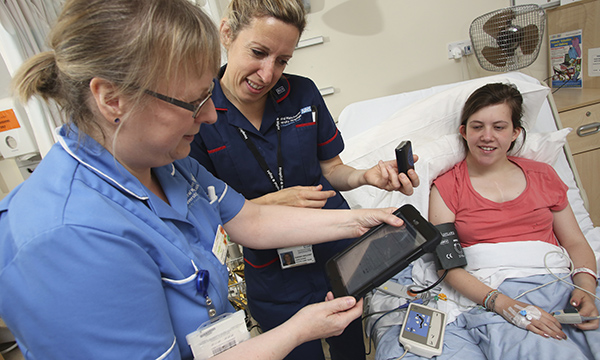Boosting the digital component in Europe’s multichannel engagement strategy
But with constrained budgets for sales forces and specialist doctors as customers, marketers must leverage state-of-the-art technology and information management systems to deliver rich content and services to their clients.
We see Europe significantly lagging behind the US and Japan in terms of the volume share and relative impact of digital contacts with prescribers. While digital by no means encompasses all of multichannel, it’s impossible to imagine a mature multichannel model without digital.
Although overall, traditional doctor engagement, that is, existing channels such as face-to-face rep interaction, is maintained, if not elevated in the US and Japan, in Europe we see the number of minutes of traditional engagement fall by almost 20%, whereas digital interaction increases by just a tiny fraction. European doctors, in line with their colleagues elsewhere, have moved online, but they aren’t communicating with companies digitally as much as they could.
In terms of digital share and impact, just four countries out of the 12 we looked at in Europe have a share of digital activity which exceeds 10% of all volume activity: Poland, Belgium, the UK and France. Poland, in fact, has a marginally higher share of digital contacts than the US, and is Europe’s digital pioneer.
Binary comparisons of the impact of digital versus traditional channels of promotion aren’t the way to assess a campaign’s multichannel impact. Nevertheless, a very significant disparity in the impact on doctors’ intentions to prescribe a product using digital or traditional communications is a warning that the process is not optimally effective.
The implications of our findings in terms of boosting digital as a component of a multichannel strategy are important for two reasons:
1. Europe’s leading markets aren’t necessarily digital pioneers
Other, smaller markets might be better markets to prove concepts, test approaches and build the case for a wider investment in digital.
2. The reasons for being a digital pioneer are complex
A combination of doctors’ trust in digital channels, and a willingness of companies to expand their breadth of channel use is crucial.
Multichannel marketing can work very effectively in Europe, if the right circumstances are complemented with the right approach. There are three key success factors:
1. Successful integration
The first step in successful multichannel is to discard the notion that it is about measuring the success of traditional channels versus digital. Rather, there must be a critical mass of use of alternative channels, with a focus on the effectiveness of the overall integrated multichannel approach.
2. Reps must engage with the digital journey
Sales forces can see digital as a threat – a potential substitute for their activities. We found that many successful multichannel programmes engaged the reps in the roll-out of digital. These reps could see that digital channels could be used to broaden and extend their relationships with their doctors.
3. Content is king
Doctors are just like anyone else in the digital world – they will seek content that interests and is useful to them. If digital communications fail to provide that, or sell too overtly, they will be a turn-off, and without digital engagement, there’s no multichannel. Marketing departments, therefore, have to respond to a multichannel environment by upping their game. Digital provides a highly effective feedback loop on the content doctors value and use. This should be studied intensively.
Multichannel, and a true expression of orchestrated customer engagement, has a long way to go to reach maturity across Europe. However, the example of pioneer companies shows that careful choices and introductions of digital and multichannel initiatives can generate measurable impact and push customer engagement to a new level. Europe will emerge from this particular revolution with a transformed commercial model.
Source PMLive http://www.pmlive.com/pharma_thought_leadership/multichannel_the_essential_european_revolution_1089529
Multichannel: the essential European revolution
